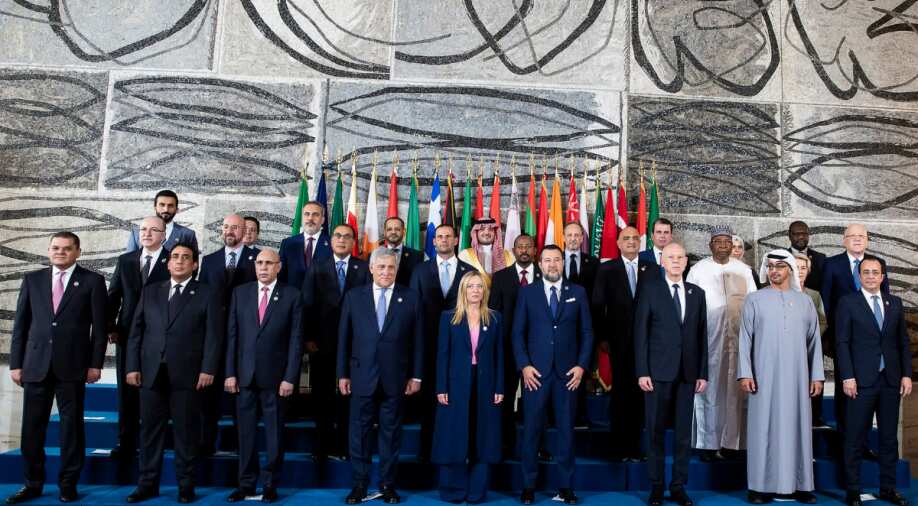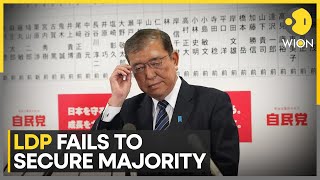अमेरिका-चीन संबंध: एक जटिल और गतिशील संबंध
## परिचय
संयुक्त राज्य अमेरिका और चीन के बीच संबंध को 21वीं सदी के सबसे महत्वपूर्ण द्विपक्षीय संबंधों के रूप में व्यापक रूप से मान्यता प्राप्त है। दोनों देश क्रमशः दुनिया की सबसे बड़ी और दूसरी सबसे बड़ी अर्थव्यवस्थाएं हैं, और इनके परस्पर राजनीतिक, आर्थिक और सुरक्षा हित हैं। हालाँकि, ताइवान, मानवाधिकार, व्यापार और क्षेत्रीय प्रभाव जैसे मुद्दों पर उनकी अनसुलझी चिंताएँ और अलग-अलग विचार भी हैं। यह संबंध सहयोग और प्रतिस्पर्धा दोनों द्वारा चिह्नित है, और 1949 में पीपुल्स रिपब्लिक ऑफ चाइना (पीआरसी) की स्थापना के बाद से इसमें महत्वपूर्ण बदलाव हुए हैं। यह निबंध अमेरिका-चीन संबंधों के इतिहास और वर्तमान स्थिति का एक संक्षिप्त विवरण प्रदान करेगा, और भविष्य की कुछ प्रमुख चुनौतियों और अवसरों पर चर्चा करें।
## इतिहास
अमेरिका-चीन संबंधों के इतिहास को चार चरणों में विभाजित किया जा सकता है:
- **1949 से पहले**: अमेरिका ने 1844 में चीन के साथ राजनयिक संबंध स्थापित किए, और विदेशी आक्रमण के खिलाफ चीन की संप्रभुता और क्षेत्रीय अखंडता का समर्थन किया। अमेरिका ने ओपन डोर पॉलिसी को भी बढ़ावा दिया, जिसने सभी देशों के लिए चीन के बाजार तक समान पहुंच की वकालत की। हालाँकि, अमेरिका का चीन के साथ आव्रजन, बाह्यक्षेत्रीयता और मिशनरी गतिविधियों जैसे मुद्दों पर भी टकराव था।
- **1949-1972**: चीनी गृहयुद्ध में चीनी कम्युनिस्ट पार्टी (सीसीपी) की जीत और ताइवान में राष्ट्रवादी सरकार के पीछे हटने के बाद, अमेरिका ने पीआरसी को मान्यता देने से इनकार कर दिया और ताइवान के साथ राजनयिक संबंध बनाए रखा। अमेरिका ने मुख्य भूमि पर संभावित आक्रमण के खिलाफ ताइवान की रक्षा का भी समर्थन किया और संयुक्त राष्ट्र में चीन के प्रवेश का विरोध किया। अमेरिका और चीन ने कोरियाई युद्ध (1950-1953) और वियतनाम युद्ध (1955-1975) के दौरान एक-दूसरे से लड़ाई की, और तिब्बत, ताइवान जलडमरूमध्य संकट और परमाणु हथियारों जैसे मुद्दों पर तनावपूर्ण टकराव हुआ।
- **1972-2000**: अमेरिका और चीन ने 1971 में मेल-मिलाप की प्रक्रिया शुरू की, जब तत्कालीन राष्ट्रीय सुरक्षा सलाहकार हेनरी किसिंजर ने राष्ट्रपति निक्सन और अध्यक्ष माओत्से तुंग के बीच बैठक की व्यवस्था करने के लिए बीजिंग की गुप्त यात्रा की। 1972 में निक्सन की चीन की ऐतिहासिक यात्रा ने अमेरिका-चीन संबंधों में एक बड़ी सफलता हासिल की और 1979 में राजनयिक संबंधों के सामान्यीकरण का मार्ग प्रशस्त किया। अमेरिका और चीन ने सोवियत विस्तारवाद का विरोध करने, आर्थिक विकास को बढ़ावा देने और क्षेत्रीय स्थिरता बनाए रखने में साझा हित स्थापित किए। अमेरिका ने एक-चीन नीति भी अपनाई, जिसने चीन की स्थिति को स्वीकार किया कि केवल एक चीन है और ताइवान उसका हिस्सा है, लेकिन ताइवान पर चीन की संप्रभुता को मान्यता नहीं दी। अमेरिका ने ताइवान संबंध अधिनियम 1979 के तहत ताइवान को हथियार बेचना जारी रखा, जिससे चीन नाराज हो गया। अमेरिका और चीन के बीच मानवाधिकार, व्यापार असंतुलन, बौद्धिक संपदा अधिकार और अन्य देशों को हथियारों की बिक्री जैसे मुद्दों पर भी असहमति थी।
- **2000-वर्तमान**: अमेरिका और चीन ने 21वीं सदी में संबंधों के एक नए चरण में प्रवेश किया, जिसमें गहरी परस्पर निर्भरता के साथ-साथ अधिक प्रतिस्पर्धा भी शामिल है। दोनों देशों ने आतंकवाद विरोध, अप्रसार, जलवायु परिवर्तन, सार्वजनिक स्वास्थ्य और वैश्विक शासन जैसे मुद्दों पर सहयोग किया। हालाँकि, उन्हें ताइवान, हांगकांग, शिनजियांग, तिब्बत, दक्षिण चीन सागर, साइबर सुरक्षा, व्यापार प्रथाओं, मानवाधिकार, लोकतंत्र को बढ़ावा देने और क्षेत्रीय प्रभाव जैसे मुद्दों पर बढ़ते मतभेदों का भी सामना करना पड़ा। ट्रम्प प्रशासन (2017-2021) के तहत संबंध और अधिक तनावपूर्ण हो गए, जिसने विभिन्न मोर्चों पर चीन के प्रति अधिक टकरावपूर्ण दृष्टिकोण अपनाया। बिडेन प्रशासन (2021-वर्तमान) ने चीन के प्रति अधिक सूक्ष्म और बहुपक्षीय दृष्टिकोण का संकेत दिया है, लेकिन यह भी कहा है कि रणनीतिक प्रतिस्पर्धा वह ढांचा है जिसके माध्यम से वह पीआरसी के साथ अपने संबंधों को देखता है।। ## वर्तमान स्थिति
अमेरिका-चीन संबंधों की वर्तमान स्थिति जटिल और गतिशील है। एक ओर, जलवायु परिवर्तन, महामारी प्रतिक्रिया जैसी वैश्विक चुनौतियों से निपटने में दोनों देशों के साझा हित हैं।
परमाणु प्रसार, आतंकवाद, और आर्थिक सुधार। वहीं दूसरी ओर,
ताइवान जैसे मुद्दों पर दोनों देशों के हित और मूल्य अलग-अलग हैं।
मानव अधिकार,
व्यापार,
तकनीकी,
और क्षेत्रीय सुरक्षा.
दोनों देश प्रभाव के लिए रणनीतिक प्रतिस्पर्धा में भी लगे हुए हैं
और एशिया-प्रशांत में नेतृत्व
और इसके बाद में।
दोनों देशों ने उच्च स्तरीय संवाद बनाए रखा है
और आदान-प्रदान
उनके मतभेदों को प्रबंधित करने के लिए
और सहयोग के क्षेत्रों का पता लगाएं।
हालाँकि,
उन्होंने भी तनाव का अनुभव किया है
और घटनाएँ
जिसने चिंताएं बढ़ा दी हैं
वृद्धि के जोखिम के बारे में
या संघर्ष.
## चुनौतियाँ
अमेरिका-चीन संबंधों के सामने चुनौतियां असंख्य हैं
और बहुआयामी.
कुछ प्रमुख चुनौतियों में शामिल हैं:
- **ताइवान**: ताइवान को चीन एक विद्रोही प्रांत मानता है
इसे मुख्य भूमि के साथ पुनः एकीकृत किया जाना चाहिए,
यदि आवश्यक हो तो बलपूर्वक।
हालाँकि, अमेरिका ताइवान को एक लोकतांत्रिक साझेदार मानता है
और एक महत्वपूर्ण सुरक्षा हित
क्षेत्र में।
अमेरिका ने ताइवान को अपनी रक्षा में मदद करने का वादा किया है
ताइवान संबंध अधिनियम के तहत
और छह आश्वासन,
और अपने हथियारों की बिक्री बढ़ा दी है
और आधिकारिक संपर्क
हाल के वर्षों में ताइवान के साथ।
चीन ने इसका जवाब सैन्य दबाव बढ़ाकर दिया है
और राजनयिक अलगाव
ताइवान के,
और अमेरिका को अपनी लाल रेखाओं को पार न करने की चेतावनी देकर।
ताइवान जलडमरूमध्य में स्थिति अस्थिर है
और संकट उत्पन्न हो सकता है
या एक युद्ध
अमेरिका और चीन के बीच.
- **मानवाधिकार**: अमेरिका और चीन के विचार अलग-अलग हैं
मानवाधिकारों पर
और लोकतंत्र.
अमेरिका ने चीन के दमन की आलोचना की है
झिंजियांग और तिब्बत में जातीय अल्पसंख्यकों की,
हांगकांग में लोकतंत्र समर्थक विरोध प्रदर्शनों पर इसकी कार्रवाई,
मुख्य भूमि पर असहमति और नागरिक समाज का दमन,
और दूसरे देशों के आंतरिक मामलों में इसका हस्तक्षेप।
अमेरिका ने प्रतिबंध लगा दिए हैं
और वीज़ा प्रतिबंध
चीनी अधिकारियों और संस्थाओं पर
मानवाधिकारों के हनन में शामिल,
और अंतर्राष्ट्रीय प्रयासों का समर्थन किया है
चीन को जवाबदेह ठहराने के लिए.
चीन ने अमेरिका की आलोचना को हस्तक्षेप बताकर खारिज कर दिया है
इसके आंतरिक मामलों में,
और अमेरिका पर पाखंड का आरोप लगाया है
और दोहरे मापदंड।
चीन ने भी जवाबी कार्रवाई करते हुए जवाबी प्रतिबंध लगाए हैं
और वीज़ा प्रतिबंध
अमेरिकी अधिकारियों और संस्थाओं पर,
और अंतर्राष्ट्रीय मानवाधिकार तंत्र की विश्वसनीयता और प्रभावशीलता को कम करके।। **व्यापार**: अमेरिका और चीन के बीच एक बड़ा और जटिल व्यापार संबंध है,
लेकिन व्यापार प्रथाओं और नीतियों पर भी विवाद हैं।
अमेरिका ने चीन पर अनुचित व्यापार प्रथाओं का आरोप लगाया है।
जैसे कि मुद्रा हेरफेर, सब्सिडी, डंपिंग, बौद्धिक संपदा की चोरी, जबरन प्रौद्योगिकी हस्तांतरण, बाजार पहुंच बाधाएं और औद्योगिक जासूसी।
अमेरिका ने टैरिफ लगाया है
और प्रतिबंध
चीनी आयात और निवेश पर,
और विश्व व्यापार संगठन (डब्ल्यूटीओ) में चीन के खिलाफ जांच और मुकदमे शुरू किए हैं।
चीन ने अमेरिकी आरोपों को नकारा
और तर्क दिया है कि अमेरिका चीन की आर्थिक वृद्धि को रोकने की कोशिश कर रहा है।
चीन ने भी जवाबी शुल्क लगाया है
और प्रतिबंध
अमेरिकी निर्यात और कंपनियों पर,
और अमेरिकी कार्रवाई को डब्ल्यूटीओ में चुनौती दी है।
दोनों देश 2020 में आंशिक व्यापार समझौते पर पहुंचे,
चरण एक समझौते के रूप में जाना जाता है,
जिसने चीन को अमेरिकी वस्तुओं और सेवाओं की खरीद बढ़ाने के लिए प्रतिबद्ध किया,
और बौद्धिक संपदा अधिकार, प्रौद्योगिकी हस्तांतरण, कृषि और वित्तीय सेवाओं पर कुछ सुधार करना।
हालाँकि, इस सौदे में व्यापार संबंधों के संरचनात्मक मुद्दों का समाधान नहीं किया गया,
और इसका कार्यान्वयन असमान और अनिश्चित रहा है।
- **प्रौद्योगिकी**: अमेरिका और चीन तकनीकी नवाचार और प्रभुत्व के लिए प्रतिस्पर्धा कर रहे हैं,
विशेष रूप से कृत्रिम बुद्धिमत्ता, जैव प्रौद्योगिकी, क्वांटम कंप्यूटिंग, 5जी और अंतरिक्ष अन्वेषण जैसे उभरते क्षेत्रों में।
अमेरिका ने चीन की तकनीकी महत्वाकांक्षाओं को लेकर चिंता व्यक्त की है।
जैसे कि इसका मेड इन चाइना 2025 प्लान,
इसकी नागरिक-सैन्य संलयन रणनीति,
इसकी डिजिटल सिल्क रोड पहल,
और इसकी बेल्ट एंड रोड पहल।
अमेरिका ने चीन पर संवेदनशील अमेरिकी प्रौद्योगिकी और डेटा को चुराने या हासिल करने के लिए साइबर हमले, जासूसी और जबरदस्ती का इस्तेमाल करने का भी आरोप लगाया है।
अमेरिका ने अपनी तकनीकी बढ़त और राष्ट्रीय सुरक्षा की रक्षा के लिए कदम उठाए हैं,
जैसे अमेरिकी प्रौद्योगिकी, अनुसंधान, शिक्षा और बाजारों तक चीनी पहुंच को प्रतिबंधित करना;
घरेलू नवाचार और अनुसंधान एवं विकास का समर्थन करना;
समान विचारधारा वाले देशों के साथ गठबंधन और साझेदारी बनाना;
और उभरती प्रौद्योगिकियों के लिए अंतरराष्ट्रीय मानकों और मानदंडों को बढ़ावा देना।
चीन ने अमेरिकी आरोपों को नकारा
और दावा किया है कि अमेरिका चीन के तकनीकी विकास और नवाचार में बाधा डालने की कोशिश कर रहा है।
चीन ने अपनी तकनीकी क्षमताओं और लचीलेपन को बढ़ाने के लिए भी कदम उठाए हैं,
जैसे घरेलू अनुसंधान एवं विकास और नवाचार में निवेश;
आपूर्ति और मांग के अपने स्रोतों में विविधता लाना;
वैकल्पिक प्रौद्योगिकियों और प्लेटफार्मों का विकास करना;
अपने वैश्विक प्रभाव और पहुंच का विस्तार करना;
और उभरती प्रौद्योगिकियों के लिए बहुपक्षीय सहयोग और शासन की वकालत करना।
- **क्षेत्रीय सुरक्षा**: एशिया-प्रशांत में क्षेत्रीय सुरक्षा मुद्दों पर अमेरिका और चीन के अलग-अलग हित और दृष्टिकोण हैं,
जैसे दक्षिण चीन सागर, पूर्वी चीन सागर, कोरियाई प्रायद्वीप, अफगानिस्तान, म्यांमार, भारत-पाकिस्तान, ईरान आदि।
अमेरिका ने इस क्षेत्र में एक मजबूत सैन्य उपस्थिति और गठबंधन नेटवर्क बनाए रखा है,
और नेविगेशन और हवाई उड़ान की स्वतंत्रता, विवादों के शांतिपूर्ण समाधान, कानून के शासन और उत्तर कोरिया के परमाणु निरस्त्रीकरण का समर्थन किया है।
अमेरिका ने क्षेत्र में अपने सहयोगियों और साझेदारों के साथ संयुक्त अभ्यास, गश्त, हथियारों की बिक्री, क्षमता निर्माण और राजनयिक पहल भी की है।
चीन ने इस क्षेत्र में अपनी संप्रभुता और हितों का दावा किया है,
और अधिक सक्रिय और मुखर विदेश नीति अपनाई है,
जैसे कि दक्षिण चीन सागर में कृत्रिम द्वीपों और सैन्य सुविधाओं का निर्माण, पूर्वी चीन सागर में अपने समुद्री दावों को लागू करना, बेल्ट एंड रोड पहल के तहत आर्थिक विकास और बुनियादी ढांचा परियोजनाओं का समर्थन करना, पड़ोसी देशों में संघर्षों और संकटों में मध्यस्थता करना आदि।
चीन ने इस क्षेत्र में अपनी सैन्य क्षमताओं और स्थिति का भी आधुनिकीकरण किया है,
जैसे कि एंटी-एक्सेस/एरिया डिनायल हथियार प्रणाली विकसित करना, अपने नौसैनिक बेड़े और वायु सेना का विस्तार करना, विवादित क्षेत्रों या संवेदनशील क्षेत्रों के पास लगातार अभ्यास और गश्त करना आदि।









